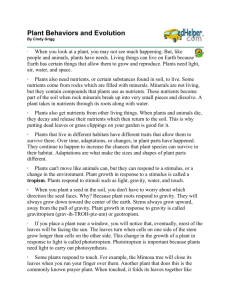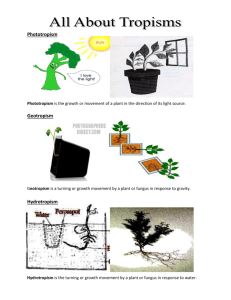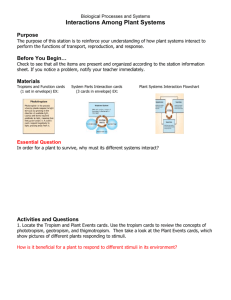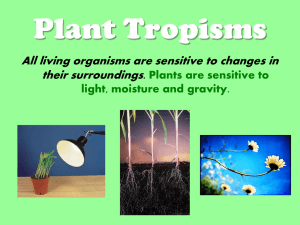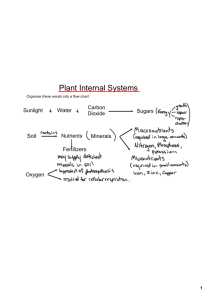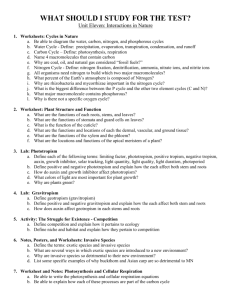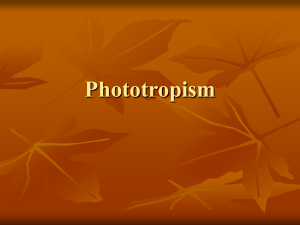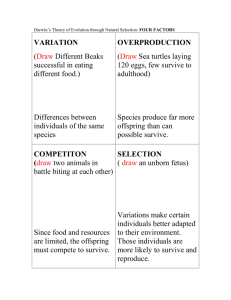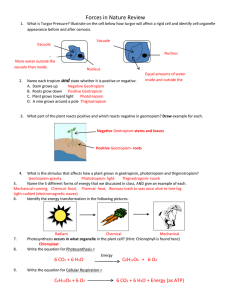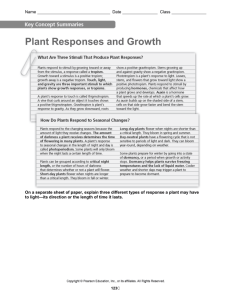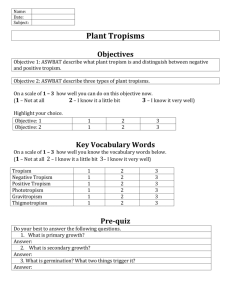Plant Behaviors and Evolution
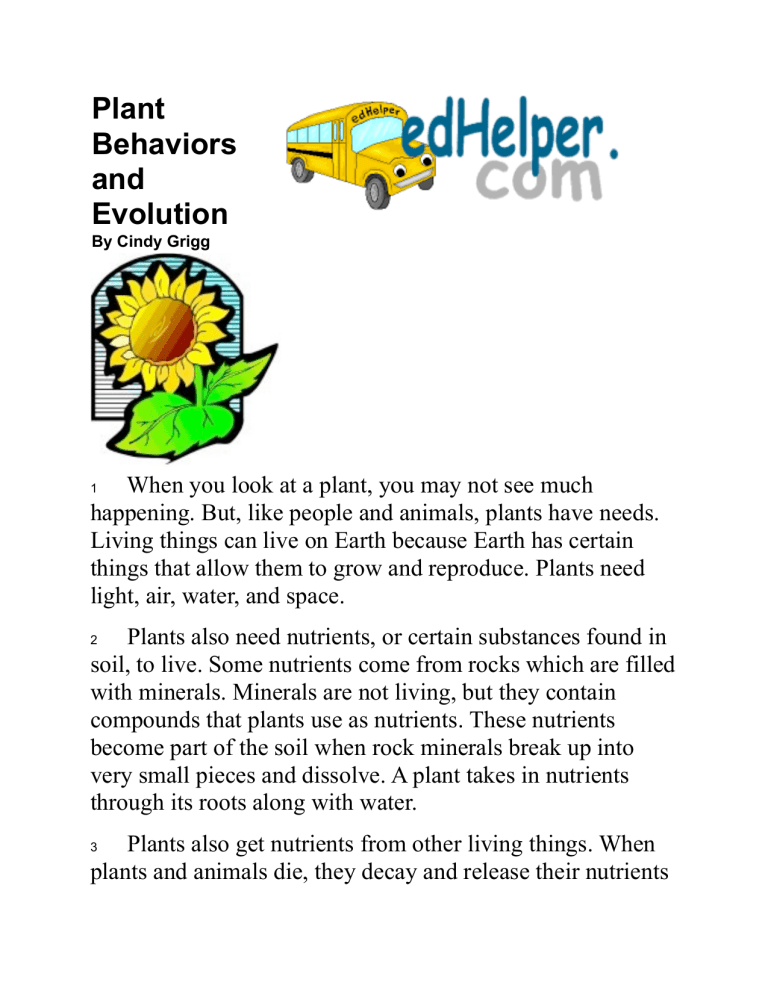
Plant
Behaviors and
Evolution
By Cindy Grigg
1
When you look at a plant, you may not see much happening. But, like people and animals, plants have needs.
Living things can live on Earth because Earth has certain things that allow them to grow and reproduce. Plants need light, air, water, and space.
2
Plants also need nutrients, or certain substances found in soil, to live. Some nutrients come from rocks which are filled with minerals. Minerals are not living, but they contain compounds that plants use as nutrients. These nutrients become part of the soil when rock minerals break up into very small pieces and dissolve. A plant takes in nutrients through its roots along with water.
3
Plants also get nutrients from other living things. When plants and animals die, they decay and release their nutrients
which then return to the soil. This is why putting dead leaves or grass clippings on your garden is good for it.
4
Plants that live in different habitats have different traits that allow them to survive there. Over time, adaptations, or changes, in plant parts have happened. They continue to happen to increase the chances that plant species can survive in their habitat. Adaptations are what make the sizes and shapes of plant parts different.
5
Plants can't move like animals can, but they can respond to a stimulus, or a change in the environment. Plant growth in response to a stimulus is called a tropism . Plants respond to stimuli such as light, gravity, water, and touch.
6
When you plant a seed in the soil, you don't have to worry about which direction the seed faces. Why? Because plant roots respond to gravity. They will always grow down toward the center of the earth. Stems always grow upward, away from the pull of gravity. Plant growth in response to gravity is called gravitropism (grav-ih-TROH-piz-um) or geotropism.
7
If you place a plant near a window, you will notice that, eventually, most of the leaves will be facing the sun. The leaves turn when cells on one side of the stem grow longer than cells on the other side. This change in the growth of a plant in response to light is called phototropism.
Phototropism is important because plants need light to carry out photosynthesis.
8
Some plants respond to touch. For example, the Mimosa tree will close its leaves when you run your finger over them.
Another plant that does this is the commonly known prayer plant. When touched, it folds its leaves together like hands folded in prayer. Vines of beans, peas, and other plants will grab onto and grow upward along a vertical support to maximize the amount of sun they receive. The response of a plant to touch is called thigmotropism (thig-mo-TROP-pizum).
9
Plant adaptations have occurred over thousands and millions of years. These adaptations started as very small changes. A plant may have been changed somehow to grow a little taller. This change would have helped it to reach into the sunlight a little higher than other plants around it. When survival is the goal, even the smallest advantage is important.
This little difference in height might have helped the plant have a better chance of surviving and reproducing than the shorter plants around it.
10
When the plant reproduced, the characteristic would have been passed on to its offspring. As generation after generation passed, there may have been another change that allowed another one of these offspring to reach even higher.
This is how the process of evolution works. These slow, gradual changes over time give certain organisms a characteristic that lets them survive to reproduce better than others of its species. These organisms produce offspring that are better able to survive. The organisms without the characteristic gradually die off and are replaced by the ones
who have it. This process that favors the better adapted organism is called natural selection .
Copyright © 2012 edHelper
1.
Name at least three things that plants need to survive.
2.
Plant adaptations increase the chances that ______.
Plants will have more flowers.
Plant species can survive in their habitat.
Plants will keep growing bigger and bigger.
Plants will have more fruits.
3.
What is a tropism?
Growing toward water
Any change in a plant or
4.
What is gravitropism or geotropism?
A plant's growth in animal
Growing toward a taller to a stimulus response to gravity
A plant growing toward plant
Plant growth in response sunlight
A plant growing toward water
A plant closing its leaves
5.
In gravitropism ______.
Roots always grow toward the center of the earth
Stems always grow away from the center of the earth
Both a and b are correct
None of the above
6.
You put a plant in a sunny window. In a few days, you notice that most of the leaves are now turned toward the window. Which tropism is this an example of?
Phototropism
Thigmotropism
Gravitropism
Geotropism
7.
When peas or bean plants grab onto a vertical support and grow upward, this is an example of ______.
Thigmotropism
Geotropism
Gravitropism
Phototropism
8.
The process that favors the better-adapted organism is called ______.
Evolution
Tropism
Adaptation
Natural selection
